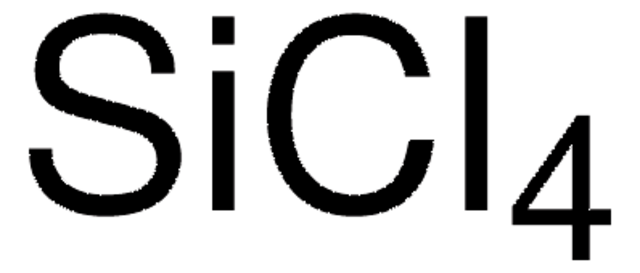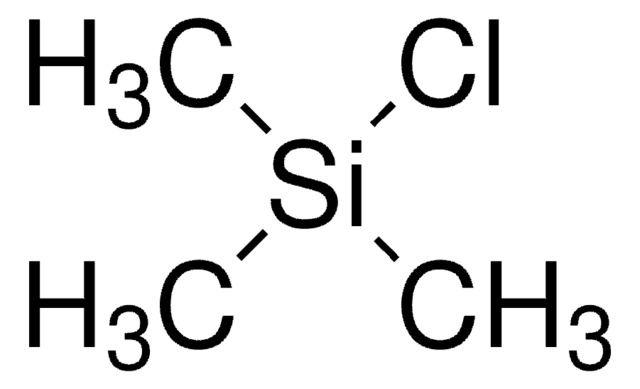205184
Hexachlorodisilane
96%
Synonym(s):
1,1,1,2,2,2-Hexachlorodisilane, Disilicon hexachloride, HCDS
Sign Into View Organizational & Contract Pricing
All Photos(1)
About This Item
Linear Formula:
(SiCl3)2
CAS Number:
Molecular Weight:
268.89
EC Number:
MDL number:
UNSPSC Code:
12352103
PubChem Substance ID:
NACRES:
NA.23
Recommended Products
Assay
96%
form
liquid
refractive index
n20/D 1.475 (lit.)
bp
144-145.5 °C (lit.)
density
1.562 g/mL at 25 °C (lit.)
SMILES string
Cl[Si](Cl)(Cl)[Si](Cl)(Cl)Cl
InChI
1S/Cl6Si2/c1-7(2,3)8(4,5)6
InChI key
LXEXBJXDGVGRAR-UHFFFAOYSA-N
Looking for similar products? Visit Product Comparison Guide
General description
Hexachlorodisilane (HCDS) is a chlorosilane used as a precursor for producing disilanes. It is a dioxidizer that is used in the production of silicon films and silicon nitride based films.
Application
HCDS can be used in the fabrication of silica aerogels by chemical vapor deposition (CVD), which can be potentially used as encapsulating agents and thermal insulators. It can also be used to synthesize 1,1,1,2,2,2-hexaamino-disilanes using CVD, which forms silicon-based films for microelectronic-based applications.
HCDS may be used as a reducing agent. It may be combined with ammonia to form silicon nitride by chemical vapor deposition(CVD) technique.
accessory
Product No.
Description
Pricing
Signal Word
Danger
Hazard Statements
Precautionary Statements
Hazard Classifications
Skin Corr. 1B
Supplementary Hazards
Storage Class Code
8A - Combustible corrosive hazardous materials
WGK
WGK 3
Flash Point(F)
Not applicable
Flash Point(C)
Not applicable
Personal Protective Equipment
dust mask type N95 (US), Eyeshields, Gloves
Choose from one of the most recent versions:
Already Own This Product?
Find documentation for the products that you have recently purchased in the Document Library.
Film Properties of Low?k Silicon Nitride Films Formed by Hexachlorodisilane and Ammonia.
Tanaka M , et al.
Journal of the Electrochemical Society, 147(6), 2284-2289 (2000)
Enhancing mechanical properties of silica aerogels
Obrey, K. A., Wilson, K. V., & Loy, D. A.
Journal of Non-Crystalline Solids, 375(19), 3435-3441 (2011)
Z Yu et al.
Journal of chromatography. A, 903(1-2), 183-191 (2001-01-12)
Carbon isotopic compositions of aetio I occurring in the form of free-base, nickel, demetallation, dihydroxysilicon(IV) and bis(tert.-butyldimethylsiloxy)silicon(IV) [(tBDMSO)2Si(IV)] have shown that it has experienced no obvious isotope fractionation during the synthesis of [(tBDMSO)2Si(IV)] porphyrin from aetio I. Here, aetio I
The Raman Spectrum of Hexachlorodisilane
Katayama M, et al.
J. Chem. Phys., 18(4), 506-509 (1950)
Chemical vapor deposition of silicon films using hexachlorodisilane
Taylor, R. C., Scott, B. A., Lin, S. T., LeGoues, F., & Tsang, J. C.
MRS Proceedings, 77, 709-709 (1986)
Our team of scientists has experience in all areas of research including Life Science, Material Science, Chemical Synthesis, Chromatography, Analytical and many others.
Contact Technical Service








